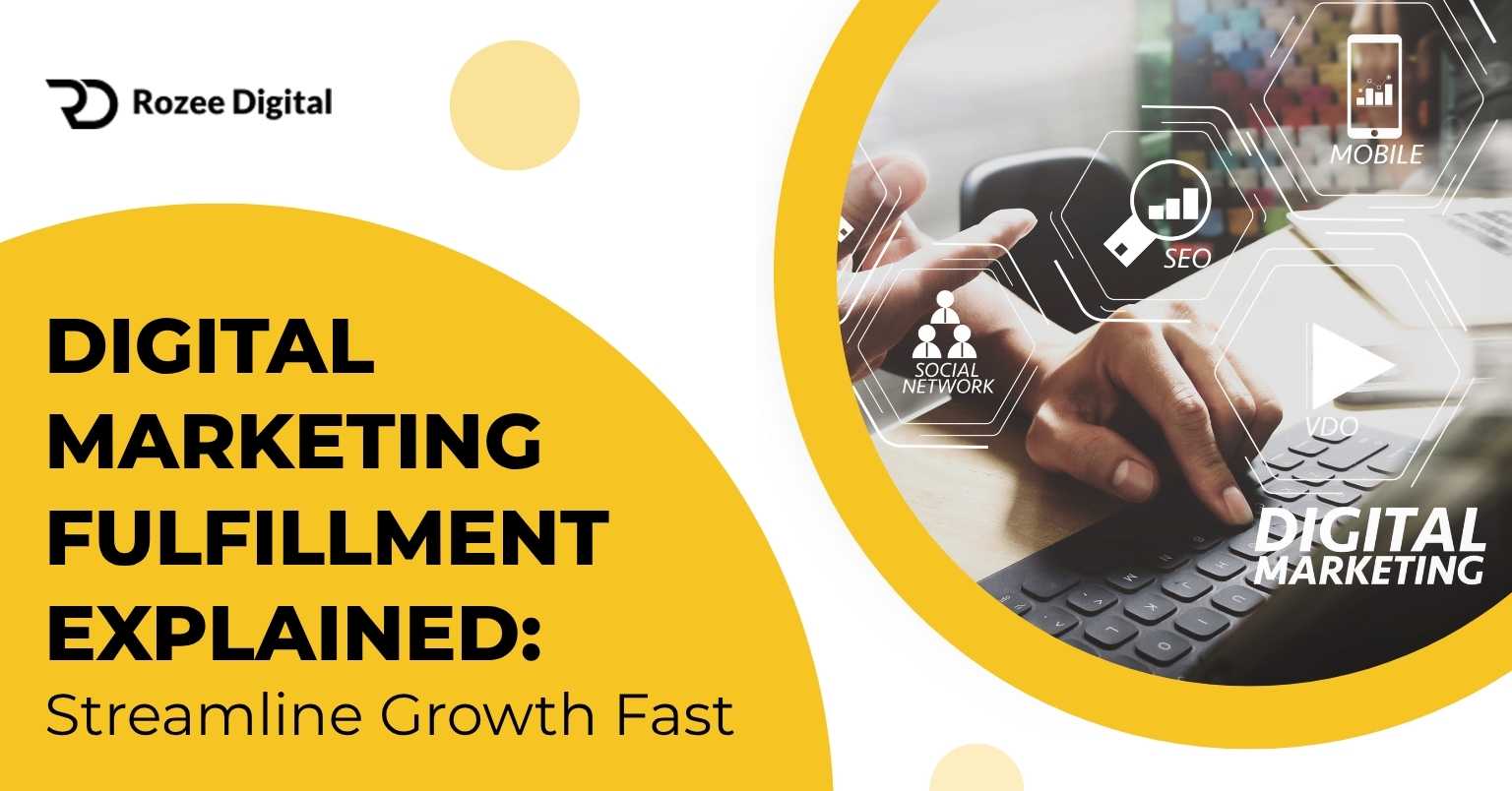Understanding Ad Retargeting
To effectively conquer the competition in the world of ecommerce, it’s crucial to understand the power of ad retargeting. This section will provide an overview of what ad retargeting is and how it works.
What is Ad Retargeting
Ad retargeting, also known as remarketing, is a digital advertising strategy that allows businesses to target and engage with users who have previously interacted with their website or mobile app. When a user visits an ecommerce website and takes certain actions, such as viewing a product page or adding items to a shopping cart, a cookie is placed on their device. This cookie enables advertisers to display targeted ads to these users as they browse other websites or social media platforms.
The primary goal of ad retargeting is to re-engage potential customers who have shown interest in a product or service. By keeping the brand in front of these users, ad retargeting aims to increase the likelihood of them making a purchase or converting in another way, such as signing up for a newsletter or filling out a contact form.
How Ad Retargeting Works
Ad retargeting works by utilizing tracking pixels and cookies to identify and track user behavior. Here’s a simplified breakdown of the process:
- A user visits an ecommerce website and takes a specific action, such as viewing a product or adding items to their cart.
- A tracking pixel, a small piece of code embedded on the website, places a cookie on the user’s device.
- As the user continues to browse the internet, the retargeting platform recognizes the cookie and serves relevant ads to the user on other websites or social media platforms.
- The ads displayed to the user are tailored to their previous interactions, showcasing products or offers that they have already shown interest in.
By displaying personalized ads to users who have already shown intent, ad retargeting aims to increase brand awareness, improve conversion rates, and ultimately drive higher ROI for ecommerce businesses.
Understanding the basics of ad retargeting is just the first step in leveraging this powerful strategy for ecommerce domination. In the following sections, we will explore the benefits, strategies, best practices, and challenges involved in ad retargeting, allowing you to maximize the effectiveness of your campaigns.
Benefits of Ad Retargeting for Ecommerce
Implementing ad retargeting strategies can bring significant benefits to ecommerce businesses. By targeting users who have already shown interest in their products or services, businesses can increase brand awareness, achieve higher conversion rates, and enjoy an improved return on investment (ROI).
Increased Brand Awareness
Ad retargeting allows businesses to stay top-of-mind with potential customers who have previously interacted with their website or products. By displaying tailored ads to these users as they browse other websites or social media platforms, businesses can reinforce their brand message and increase brand recall. This continuous exposure helps to establish brand recognition and familiarity, making it more likely for users to engage with the brand again in the future.
Higher Conversion Rates
One of the key advantages of ad retargeting is its ability to target users who have already expressed interest in a particular product or service. By showing relevant ads to these users, businesses can effectively remind them of their initial interest and encourage them to complete their purchase or take the desired action. This personalized approach has been shown to significantly increase conversion rates, as users are more likely to convert when they are already familiar with the brand and its offerings.
Improved ROI
Ad retargeting offers a cost-effective advertising strategy for ecommerce businesses. Since retargeting focuses on targeting users who have already shown interest, businesses can optimize their ad spend by reaching a more qualified audience. By reallocating their budget towards retargeting campaigns, businesses can maximize their ROI by ensuring that their ads are seen by users who are more likely to convert. This targeted approach helps to minimize wasted ad spend on users who may not have a genuine interest in the products or services being offered.
By leveraging the benefits of ad retargeting, ecommerce businesses can effectively engage with potential customers, increase conversion rates, and achieve a higher return on their advertising investment. However, it’s important to implement best practices for ad retargeting to maximize the effectiveness of these campaigns and overcome any potential challenges.
Ad Retargeting Strategies for Ecommerce Domination
To maximize the effectiveness of ad retargeting for ecommerce, it’s essential to implement strategic approaches that can help you dominate the market. In this section, we will explore three key strategies: segmenting your audience, creating compelling ad creatives, and setting frequency caps.
Segmenting Your Audience
Segmenting your audience is a crucial step in ad retargeting for ecommerce. By dividing your audience into specific groups based on their behavior, preferences, or demographics, you can tailor your ads to resonate with each segment. This personalized approach increases the relevance of your ads and boosts the chances of conversion.
Consider segmenting your audience based on factors such as past purchase history, browsing behavior, or engagement with specific products. For example, you can create segments for customers who have abandoned their shopping carts, those who have made recent purchases, or those who have shown interest in particular product categories. By understanding the unique needs and interests of each segment, you can craft targeted ads that speak directly to their preferences and encourage them to take action.
Creating Compelling Ad Creatives
Compelling ad creatives play a vital role in capturing the attention of your retargeted audience. To ensure your ads stand out, it’s important to create visually appealing and engaging content. Use eye-catching images or videos that showcase your products in an enticing way. Incorporate persuasive copy that highlights the benefits, features, or promotions that make your products irresistible.
Consider using dynamic ads that automatically populate with products or content based on each user’s browsing history. This personalized approach enhances the relevance of your ads and increases the likelihood of conversion. Additionally, include a strong call-to-action that encourages users to click through to your website and complete their purchase.
Setting Frequency Caps
While retargeting can be effective, bombarding users with excessive ad impressions can lead to ad fatigue and irritation. Setting frequency caps helps you control the number of times an individual sees your ads within a specific timeframe. This prevents overexposure and ensures that your ads maintain their impact.
By setting frequency caps, you can strike a balance between reminding users about your products and services without overwhelming them. Experiment with different frequency levels to determine the optimal number of ad impressions that generate the best results. Keep in mind that the ideal frequency may vary depending on your industry, target audience, and campaign objectives.
By implementing these ad retargeting strategies, you can increase the effectiveness of your campaigns and dominate the ecommerce market. Remember to continually track and analyze the performance of your retargeting efforts, making any necessary adjustments to optimize your results. With the right segmentation, compelling ad creatives, and well-managed frequency caps, you can drive higher conversions and achieve ecommerce domination.
Best Practices for Ad Retargeting
To maximize the effectiveness of your ad retargeting campaigns, it’s essential to follow best practices that optimize tracking user behavior, ensure optimal timing of ads, and implement A/B testing and optimization.
Tracking User Behavior
Tracking user behavior is a fundamental aspect of successful ad retargeting. By understanding how users interact with your website or previous ads, you can tailor your retargeting efforts to their specific needs and interests.
Implementing a comprehensive tracking system, such as the use of cookies or pixel tracking, allows you to collect valuable data on user actions. This data includes information on the pages they visited, products they viewed, and actions they took on your site. By analyzing this data, you can gain insights into user preferences and create more personalized and relevant retargeting ads.
Optimal Timing of Ads
Timing plays a crucial role in ad retargeting. Showing your ads to users at the right moment can significantly impact their likelihood of converting. It’s important to strike a balance between staying top-of-mind and avoiding ad fatigue.
Consider using frequency caps to control the number of times a user sees your retargeting ads within a specific time frame. This helps prevent overexposure and annoyance, ensuring that your ads remain impactful and engaging. Additionally, timing your ads strategically, such as during peak shopping hours or when users are most likely to be receptive, can increase their effectiveness.
A/B Testing and Optimization
A/B testing is a powerful technique for optimizing your ad retargeting campaigns. By creating multiple variations of your ad creatives, headlines, or call-to-action buttons, you can test which elements resonate best with your target audience. This iterative process allows you to refine your ads and improve their performance over time.
When conducting A/B tests, focus on testing one variable at a time to accurately identify the factors that contribute to better results. Monitor key metrics such as click-through rates (CTRs), conversion rates, and return on ad spend (ROAS) to evaluate the impact of each variation. By continuously optimizing your retargeting ads based on the insights gained from A/B testing, you can drive better engagement and conversions.
By following these best practices for ad retargeting, you can enhance the effectiveness of your campaigns and increase your chances of ecommerce domination. Remember to monitor and analyze the data regularly to make informed decisions and adapt your strategies accordingly. With proper tracking, timing, and optimization, ad retargeting can become a powerful tool in your ecommerce marketing arsenal.
Overcoming Challenges in Ad Retargeting
While ad retargeting can be a powerful strategy for ecommerce businesses, it is not without its challenges. Understanding and addressing these challenges is key to ensuring the success of your ad retargeting campaigns. Let’s explore some common challenges and how to overcome them.
Ad Fatigue
One challenge in ad retargeting is the risk of ad fatigue. Ad fatigue occurs when users are repeatedly exposed to the same retargeting ads, leading to a decrease in engagement and potential annoyance. To overcome ad fatigue, it is important to diversify your ad creatives and messaging. Create a variety of ad variations that resonate with different segments of your audience. This can help maintain interest and prevent ad fatigue. Additionally, consider implementing frequency caps to limit the number of times a user sees the same ad within a given time period. By managing ad exposure, you can ensure that your retargeting ads remain effective and engaging.
Ad Blockers
Another challenge in ad retargeting is the increasing use of ad blockers. Ad blockers are browser extensions or software that prevent ads from being displayed to users. As a result, your retargeting ads may not reach a significant portion of your target audience. To overcome this challenge, it is important to diversify your advertising channels. Consider exploring alternative platforms such as social media ads, native advertising, or sponsored content. By diversifying your ad placements, you can reach a wider audience and mitigate the impact of ad blockers.
Privacy Concerns
Privacy concerns are a significant challenge in ad retargeting. Users are becoming more aware of their online privacy and are concerned about the collection and use of their personal data. To address privacy concerns, it is crucial to be transparent about your data collection and retargeting practices. Clearly communicate your privacy policy and obtain consent for data collection. Consider implementing strategies such as cookie consent banners and offering opt-out options for retargeting. By respecting user privacy and providing transparency, you can build trust with your audience and alleviate privacy concerns.
Overcoming these challenges in ad retargeting requires a proactive and strategic approach. By diversifying your ad creatives, exploring alternative advertising channels, and addressing privacy concerns, you can maximize the effectiveness of your ad retargeting campaigns and achieve ecommerce domination.
The Future of Ad Retargeting

As technology continues to advance, the world of ad retargeting is also evolving. With the aim of delivering more personalized and effective advertising experiences, emerging technologies, personalization and automation, and ethical considerations are shaping the future of ad retargeting.
Emerging Technologies
The future of ad retargeting is closely tied to emerging technologies that enable more precise targeting and engagement. One such technology is artificial intelligence (AI), which can analyze vast amounts of data to identify patterns and make predictions. AI-powered algorithms can help optimize ad delivery, ensuring that the right ads are shown to the right audience at the right time. This can lead to higher engagement and conversion rates.
Another emerging technology is machine learning, which enables systems to learn from data and improve their performance over time. Machine learning algorithms can analyze user behavior and preferences to create personalized ad experiences. By understanding individual preferences, ad retargeting can become more effective in delivering relevant ads to consumers.
Personalization and Automation
As consumers increasingly expect personalized experiences, personalization will play a significant role in the future of ad retargeting. By leveraging data on user behavior, preferences, and demographics, advertisers can create highly targeted ads that resonate with their audience. Personalized ad creatives and messaging can improve engagement and increase conversion rates.
Automation will also continue to play a vital role in ad retargeting. Automated ad delivery systems can optimize ad placements and budgets based on real-time data. This streamlines the process of managing ad campaigns and allows advertisers to focus on strategy and creativity. Advertisers can use platforms like Google AdWords, Facebook Ads, and YouTube Ads to leverage the power of automation in their ad retargeting efforts.
Ethical Considerations
With the growing importance of privacy and data protection, ethical considerations will shape the future of ad retargeting. Advertisers will need to be transparent about data collection and use, ensuring that users have control over their personal information. Ad retargeting practices must comply with relevant regulations and industry standards to build trust with consumers.
Ethical considerations also extend to the content and delivery of ads. Advertisers should strive to create ads that are respectful, non-intrusive, and relevant to the user’s interests. By delivering ads that provide value and avoid excessive frequency, advertisers can enhance the user experience and build positive brand perception.
As ad retargeting continues to evolve, it will be essential for advertisers to stay informed about emerging technologies, embrace personalization and automation, and adhere to ethical standards. By leveraging the power of technology while respecting user privacy and preferences, ad retargeting can enhance the effectiveness of advertising campaigns and drive ecommerce domination.






